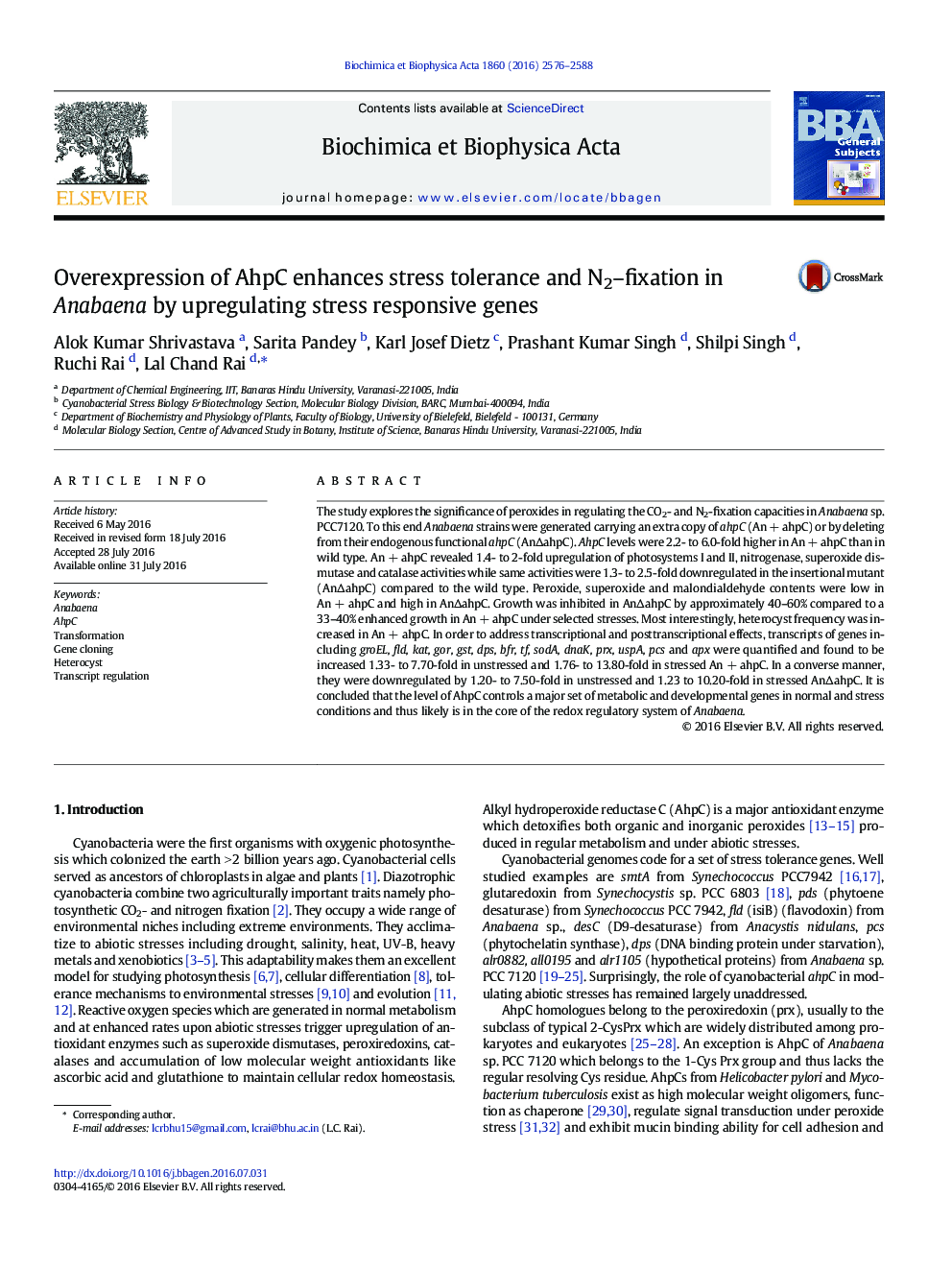| Article ID | Journal | Published Year | Pages | File Type |
|---|---|---|---|---|
| 1947319 | Biochimica et Biophysica Acta (BBA) - General Subjects | 2016 | 13 Pages |
Abstract
The study explores the significance of peroxides in regulating the CO2- and N2-fixation capacities in Anabaena sp. PCC7120. To this end Anabaena strains were generated carrying an extra copy of ahpC (An + ahpC) or by deleting from their endogenous functional ahpC (AnÎahpC). AhpC levels were 2.2- to 6.0-fold higher in An + ahpC than in wild type. An + ahpC revealed 1.4- to 2-fold upregulation of photosystems I and II, nitrogenase, superoxide dismutase and catalase activities while same activities were 1.3- to 2.5-fold downregulated in the insertional mutant (AnÎahpC) compared to the wild type. Peroxide, superoxide and malondialdehyde contents were low in An + ahpC and high in AnÎahpC. Growth was inhibited in AnÎahpC by approximately 40-60% compared to a 33-40% enhanced growth in An + ahpC under selected stresses. Most interestingly, heterocyst frequency was increased in An + ahpC. In order to address transcriptional and posttranscriptional effects, transcripts of genes including groEL, fld, kat, gor, gst, dps, bfr, tf, sodA, dnaK, prx, uspA, pcs and apx were quantified and found to be increased 1.33- to 7.70-fold in unstressed and 1.76- to 13.80-fold in stressed An + ahpC. In a converse manner, they were downregulated by 1.20- to 7.50-fold in unstressed and 1.23 to 10.20-fold in stressed AnÎahpC. It is concluded that the level of AhpC controls a major set of metabolic and developmental genes in normal and stress conditions and thus likely is in the core of the redox regulatory system of Anabaena.
Related Topics
Life Sciences
Biochemistry, Genetics and Molecular Biology
Biochemistry
Authors
Alok Kumar Shrivastava, Sarita Pandey, Karl Josef Dietz, Prashant Kumar Singh, Shilpi Singh, Ruchi Rai, Lal Chand Rai,
